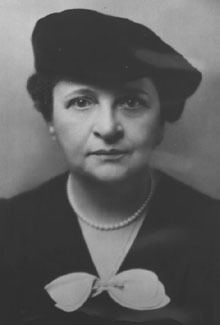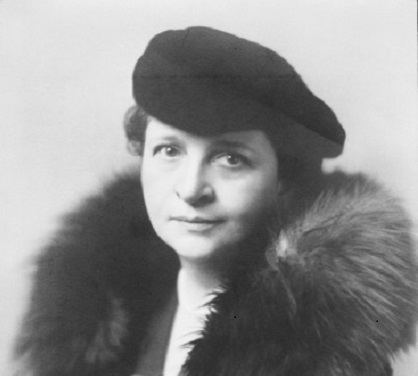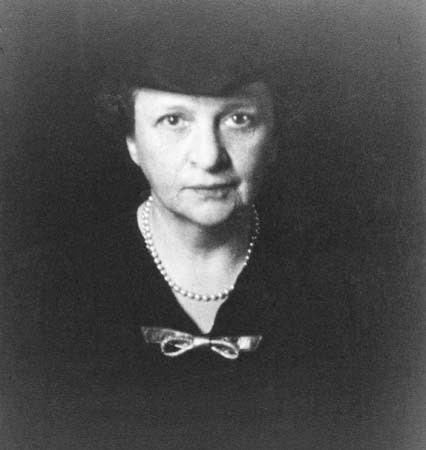Name Frances Perkins | Spouse(s) Paul Caldwell Wilson | |
President Franklin D. RooseveltHarry S. Truman Full Name Fannie Coralie Perkins Alma mater Mount Holyoke CollegeColumbia University Died May 14, 1965, New York, United States Books The Roosevelt I knew Similar People Eleanor Roosevelt, Mary McLeod Bethune, Harry Hopkins, Huey Long, Charles Coughlin | ||
Frances Perkins | Capital & Labor
Frances Perkins Wilson (born Fannie Coralie Perkins; April 10, 1880 – May 14, 1965) was the U.S. Secretary of Labor from 1933 to 1945, the longest serving in that position, and the first woman appointed to the U.S. Cabinet. As a loyal supporter of her friend, Franklin D. Roosevelt, she helped pull the labor movement into the New Deal coalition. She and Interior Secretary Harold L. Ickes were the only original members of the Roosevelt cabinet to remain in office for his entire presidency.
Contents
- Frances Perkins Capital Labor
- Honoring frances perkins
- Early life and education
- Life and career before the cabinet position
- Cabinet career
- Later life
- Legacy
- Character in Historical Context
- Memorials and Monuments
- Perkins and the Maine Department of Labor mural
- References

During her term as Secretary of Labor, Perkins executed many aspects of the New Deal, including the Civilian Conservation Corps, the Public Works Administration and its successor the Federal Works Agency, and the labor portion of the National Industrial Recovery Act. With the Social Security Act she established unemployment benefits, pensions for the many uncovered elderly Americans, and welfare for the poorest Americans. She pushed to reduce workplace accidents and helped craft laws against child labor. Through the Fair Labor Standards Act, she established the first minimum wage and overtime laws for American workers, and defined the standard forty-hour work week. She formed governmental policy for working with labor unions and helped to alleviate strikes by way of the United States Conciliation Service. Perkins resisted the drafting of American women to serve the military in World War II so that they could enter the civilian workforce in greatly expanded numbers.

Honoring frances perkins
Early life and education

Perkins was born in Boston, Massachusetts, to Susan Bean Perkins and Frederick W. Perkins, the owner of a stationer's business (both of her parents originally were from Maine). She spent much of her childhood in Worcester, Massachusetts. She was christened Fannie Coralie Perkins, but she changed her name to Frances when she joined the Episcopal church in 1905.

Perkins attended the Classical High School in Worcester. She graduated from Mount Holyoke College with a Bachelor of Arts degree in chemistry and physics in 1902. She obtained a master's degree in political science from Columbia University in 1910. In the interim, she held a variety of teaching positions including a position teaching chemistry from 1904 to 1906 at Ferry Hall School (now Lake Forest Academy). In Chicago, she volunteered at settlement houses, including Hull House. In 1918 she began her years of study in economics and sociology at the University of Pennsylvania's Wharton School.
Life and career before the cabinet position
She achieved statewide prominence as head of the New York Consumers League in 1910 and lobbied with vigor for better working hours and conditions. Perkins also taught as a professor of sociology at Adelphi College. The next year, she witnessed the tragic Triangle Shirtwaist Factory fire, a pivotal event in her life. It was because of this event that Frances Perkins would leave her office at the New York Consumers League and become the executive secretary for the Committee on Safety of the City of New York.
In 1913, Perkins married New York economist Paul Caldwell Wilson. She kept her birth name, defending her right to do so in court. The couple had a daughter, Susanna. Both father and daughter were described by biographer Kirstin Downey as having "manic-depressive symptoms". Wilson was frequently institutionalized for mental illness. Perkins was the sole support for her household.
Prior to moving to Washington, DC, Perkins held various positions in New York State government. She had gained respect from the political leaders in the state of New York. In 1919 she was added to the Industrial Commission of the State of New York by Governor Alfred Smith. In 1929 the newly elected New York governor, Franklin Roosevelt, appointed Perkins as the inaugural Commissioner of the New York State Department of Labor.
Having earned the co-operation and respect of various political factions, Perkins ably helped put New York in the forefront of progressive reform. She expanded factory investigations, reduced the workweek for women to 48 hours and championed minimum wage and unemployment insurance laws. She worked vigorously to put an end to child labor and to provide safety for women workers.
Cabinet career
In 1933, Roosevelt appointed Perkins as Secretary of the Department of Labor, a position she held for twelve years, longer than any other Secretary of Labor. She became the first woman to hold a cabinet position in the United States and thus, became the first woman to enter the presidential line of succession. With few exceptions, President Roosevelt consistently supported the goals and programs of Secretary Perkins.
As Secretary of Labor, Perkins played a key role in the cabinet by writing New Deal legislation, including minimum-wage laws. Her most important contribution, however, came in 1934 as chairwoman of the President's Committee on Economic Security (CES). In this post, she was involved in all aspects of the reports including her hand in the creation of the Civilian Conservation Corps and the She-She-She Camps. Perkins also drafted the Social Security Act of 1935. On the day that the bill was signed into law, her husband escaped from a mental institution.
In 1939, she came under fire from some members of Congress for refusing to deport the communist head of the west coast International Longshore and Warehouse Union, Harry Bridges. Ultimately, however, Bridges was vindicated by the Supreme Court.
Later life
Following her tenure as Secretary of Labor, in 1945 Perkins was asked by President Harry Truman to serve on the United States Civil Service Commission, which she did until 1952, when her husband died and she resigned from federal service. During this period, she also published a memoir of her time in FDR's administration called The Roosevelt I Knew, (1946) which offered a sympathetic view of the president.
Following her government service career, Perkins remained active as a teacher and lecturer at the New York State School of Industrial and Labor Relations at Cornell University until her death in 1965 at age 85. She is buried in the Glidden Cemetery in Newcastle, Maine.
Legacy
Perkins would have been famous simply by being the first woman cabinet member, but her legacy stems from her additional accomplishments. She was largely responsible for the U.S. adoption of social security, unemployment insurance, federal laws regulating child labor, and adoption of the federal minimum wage.
The liturgical calendar of the Episcopal Church honors Perkins with a feast day on May 13. She was the winner of the "Golden Halo" in Lent Madness 2013, an educational tool hosted by Forward Movement Publications featuring the saints of the calendar of the Episcopal Church.
In 2015, she was named as one of the 31 Icons of 2015's LGBT History Month by Equality Forum.
Character in Historical Context
As the first female member of the presidential cabinet, Perkins had an unenviable challenge: she had to be as capable, as fearless, as tactful, as politically astute as the other Washington politicians, in order to make it possible for other women to be accepted into the halls of power after her.
Perkins had a cool personality, which held her aloof from the crowd. Although on one occasion she engaged in some heated name-calling with Alfred P. Sloan, the chairman of the board at General Motors. During a punishing United Auto Workers strike, she called him up in the middle of the night, and called him a scoundrel and a skunk for not giving in to the union's demands. "You don't deserve to be counted among decent men. You'll go to hell when you die." Sloan's late-night response was one of irate indignation.
Her results indicate her great love of workers and lower-class groups, but her Boston upbringing held her back from mingling freely and exhibiting personal affection. She was well-suited for the high-level efforts to effect sweeping reforms, but never caught the public's eye or its affection.
Memorials and Monuments
The Frances Perkins Building that is the headquarters of the U.S. Department of Labor in Washington, D.C. was named in her honor in 1980.
The Frances Perkins Center is a nonprofit organization located in Damariscotta, Maine. Its mission is to fulfill the legacy of Frances Perkins through educating visitors on her work and programs, and preserving the Perkins family homestead for future generations. The Center regularly hosts events and exhibitions for the public.
Perkins remains a prominent alumna of Mount Holyoke College, whose Frances Perkins Program allows "women of non-traditional age" (i.e., age 24 or older) to complete a Bachelor of Arts degree. There are approximately 140 Frances Perkins scholars each year.
Perkins and the Maine Department of Labor mural
A mural depicting Perkins was displayed in the Maine Department of Labor headquarters, the native state of both of her parents. On March 23, 2011, Maine's Republican governor, Paul LePage, ordered the mural removed. A spokesperson for the governor said they received complaints about the mural from state business officials and from an anonymous fax charging that it was reminiscent of “communist North Korea where they use these murals to brainwash the masses”. LePage also ordered that the names of seven conference rooms in the state department of labor be changed, including one named after Perkins. A lawsuit was filed in U.S. District Court seeking "to confirm the mural's current location, ensure that the artwork is adequately preserved, and ultimately to restore it to the Department of Labor's lobby in Augusta". As of January 2013, the mural resides at Maine State Museum, Maine State Library and Maine State Archives entrance.
